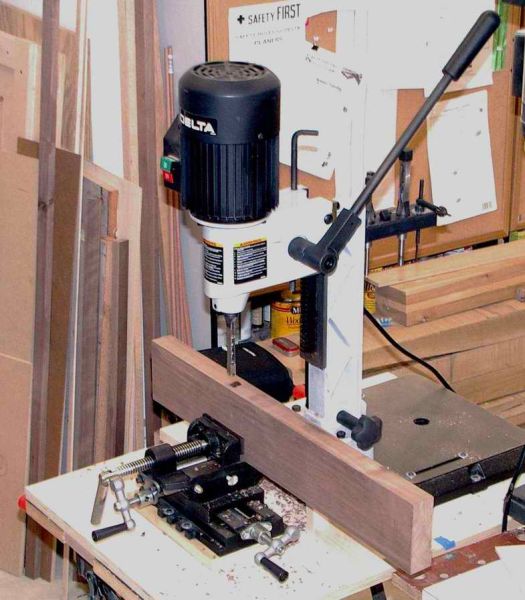Question
Okay, 2.5" square table legs. Walnut. I could try to get 12/4 walnut and rip it, but that will be very costly, and may result in twisting and warping, then waste. Or I could try a lock mitre router method, using 4/4 stock, mitering 4 pieces together.
1. With the hollow center, how efficient will a tenon be if it only goes in 4/4 worth of wood? I would have to add some sort of center stock.
2. Will that center stock's expansion/contraction effect the locked joint if the insert is tight?
3. I know that one can take 3- 4/4" blanks, face glue them together, then use 1/16" stock to veneer the edges with the laminate showing. (I have a vacuum press.)
4. When face gluing... Laminating 4/4 boards together, is there concern about orientation of grain? Does the middle stock have to be the same wood?
Forum Responses
(Furniture Making Forum)
From contributor D:
Get the 12/4 stock and get on with it. Labor for all the faking it methods is costly, too.
Regarding your question number three, I do not recommend that approach. Lacks homogeneity. When laminating, you're better with an odd number of pieces (3, 5, etc.). In your case, I regularly go with a 5/4 center and 4/4 outsides in all the same species (whatever the essence!) and then veneer wrap the whole thing. Solid, reliable and looks very nice.
Sure, you could go only with 12/4. Make sure you get straight oriented grain for this thickness, otherwise you're waiting for a problem to happen. It just all boils down to what the final result you're looking/commissioned for. I do all those techniques regularly!
Regarding question number one, if you ever use the miter or lock miter approach, yes it is better to make a perfect fit center core of the same species. For this one, try to find stock with straight grain orientation (quarter sawn or not, when squared it makes no difference if itís straight grained).
